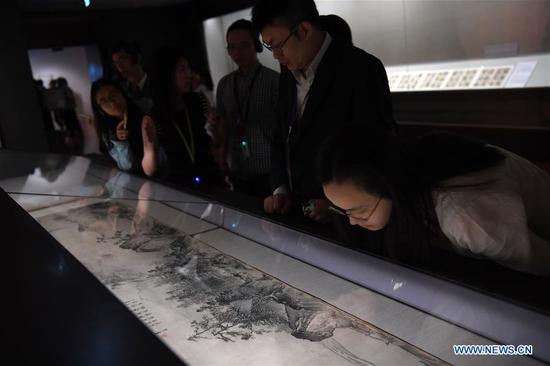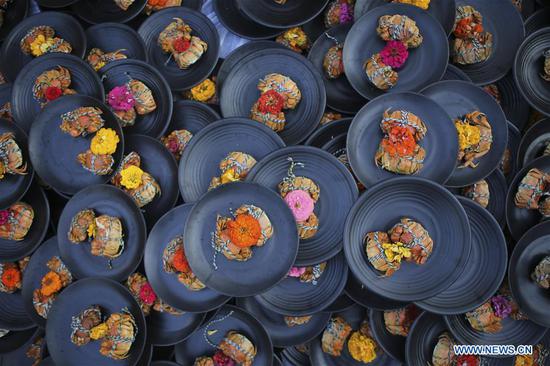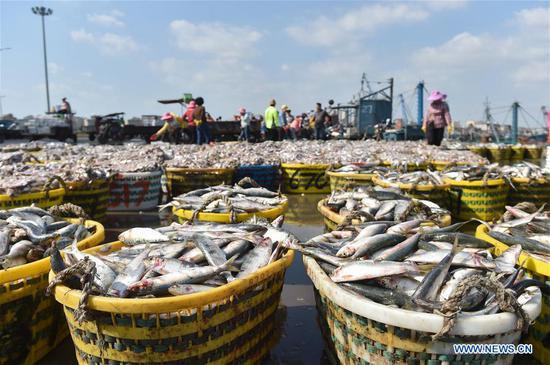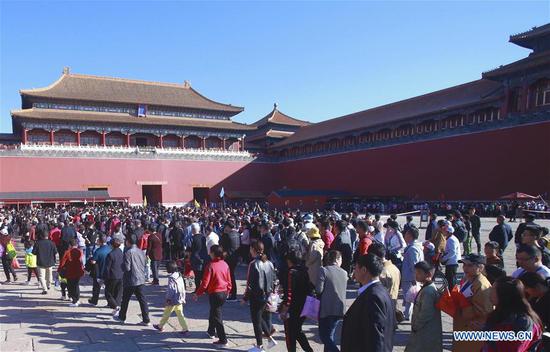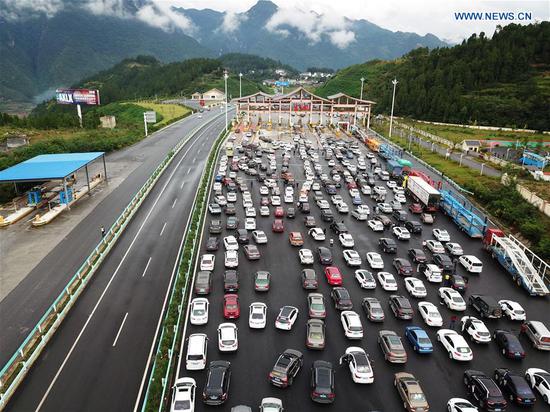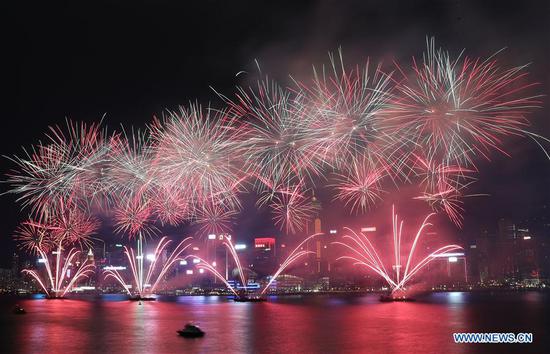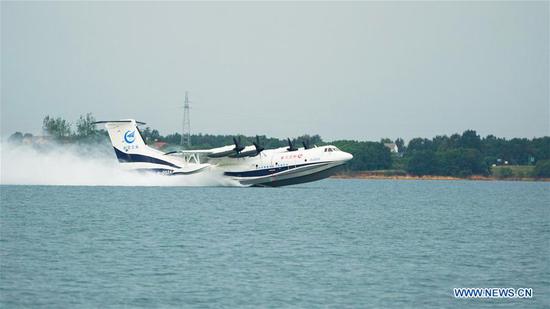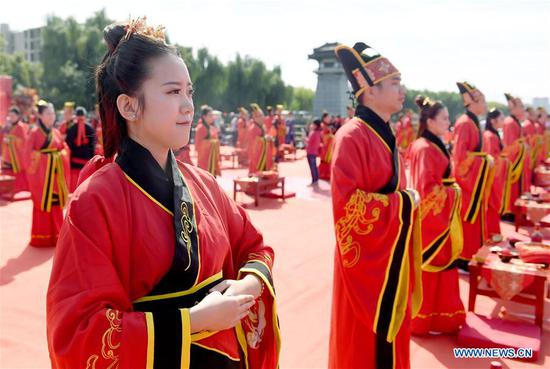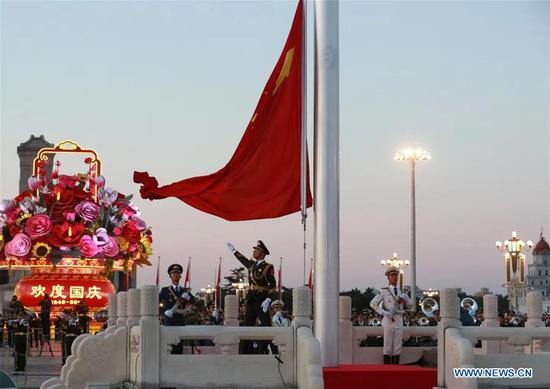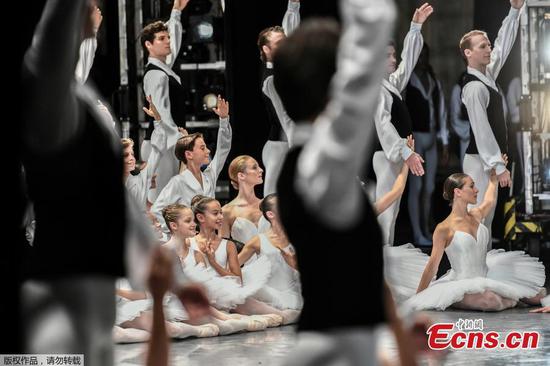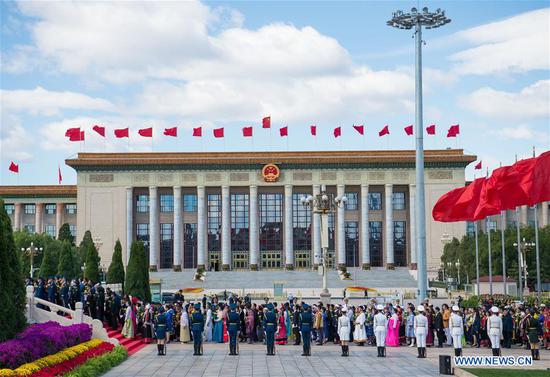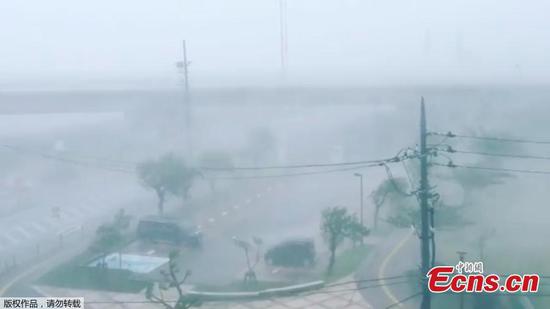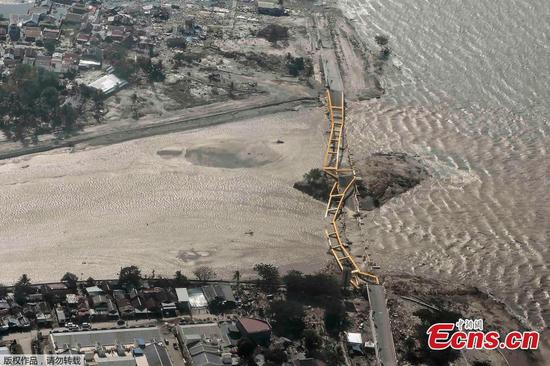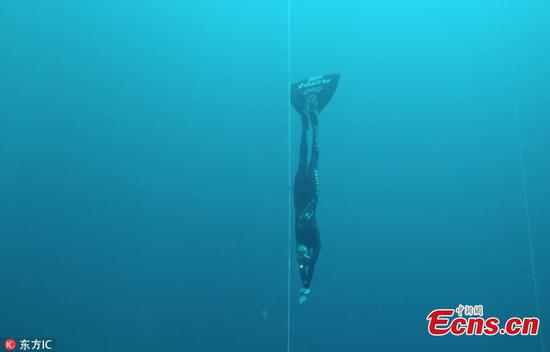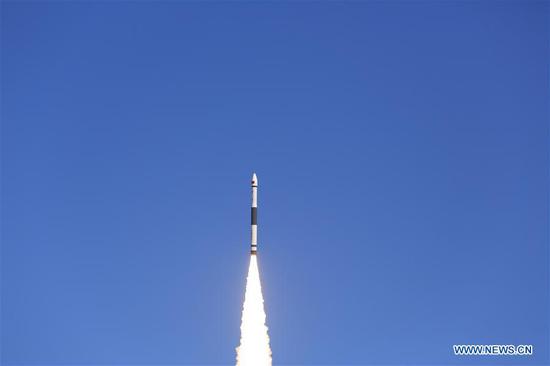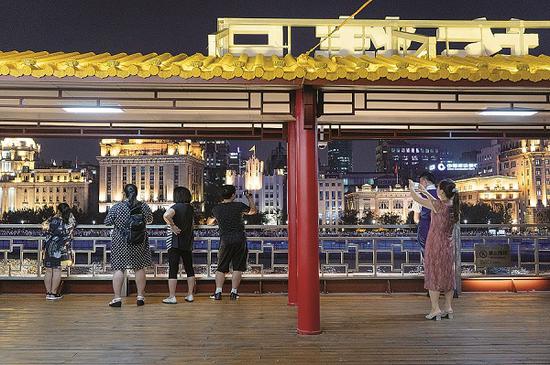
Taking a cruise ship and traveling along the Huangpu River is a classic and popular tourist activity in Shanghai. (Photos by Gao Erqiang/China Daily)
While passenger volume for ferries steadily declined in the 1990s, the river cruise industry, on the other hand, was in the midst of a boom.
“Cruises grew in popularity in the 1990s as the pace of urbanization in Shanghai accelerated,” said Fang Ao, the manager of Shanghai Huangpu River Cruise Company.
“That was a period when people’s leisure preferences changed from having a picnic in a park to taking a romantic tour on a cruise ship at night when they can enjoy the cool breeze.”
Before 1998, only two ships offered sightseeing tours along the river. Today, there are 35 cruise ships that operate along the waterway.
According to Feng Haiping, a former manager at Shanghai Ferry Company, the rise of the cruise industry was in tandem with the modernization of the city. As the landscape changed dramatically from old docks and warehouses to scenic spots and towering buildings such as the Shanghai Tower, the highest building in the country, more and more people flocked to take in the ever-changing sights.
The scenes have in recent times gotten even better. In January, the riverfronts on both sides of the river were connected to form a scenic 45-km trail that is open to the public. From its northern end at the Yangpu Bridge, the trail meanders through five districts to its southern end at Xupu Bridge.
The cruise industry is also set for a sprucing-up. The local government announced in May that it is aiming to turn sightseeing cruises in the city into a world-class attraction through a series of upgrades and by merging small operators.
The No. 1 Cruise Ship, the biggest vessel of its kind on the river, resumed operations in July after undergoing an upgrade. The 1,000-passenger dragon-shaped ship, which features traditional Chinese elements and bilingual audio guides in Chinese and English, departs from the wharf near the Bund and travels past the Yangpu Bridge or Wusongkou International Cruise Terminal before returning to its point of origin. Tickets are currently priced at 300 yuan ($44).
In the future, more cruise lines will be opened to provide tours during the day, and more stops might even be included, said Fang. The increase in the number of tours would also help to meet the growing demands for river cruises. Annual passenger cruise volume is expected to hit 6 million by 2020, twice current figures, according to the city’s plans.
But the authorities have not forgotten about the ferry industry, having announced that free WiFi and multimedia services would be made available on these vessels in the third quarter of this year.
“The city is growing and I love how it looks at every period,” said Zhen Yu, director at a State-owned research institute who is a regular customer of ferries and cruise ships.
“You get to appreciate the city’s landscape and culture when traveling on a cruise ship. On a ferry, you get to witness the charming scenes of daily life, such as people on motorcycles eating their breakfast. Ferries and cruises represent the past and present of Shanghai.”















